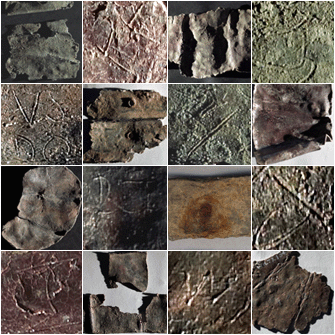Curse Tablets of Roman Britain
‘Curse tablets’ are small sheets of lead, inscribed with messages from individuals seeking to make gods and spirits act on their behalf and influence the behaviour of others against their will. The motives are usually malign and their expression violent, for example to wreck an opponent’s chariot in the circus, to compel a person to submit to sex or to take revenge on a thief. Letters and lines written back to front, magical ‘gibberish’ and arcane words and symbols often lend the texts additional power to persuade. In places where supernatural agents could be contacted, thrown into sacred pools at temples, interred with the dead or hidden by the turning post at the circus, these tablets have survived to be found by archaeologists.
Our written evidence for the Greek and Roman world mostly derives from literary texts written by and for small aristocratic groups, but in curse tablets we hear different voices, of provincials and non-citizens on the edge of empire, women and slaves. With the growing number of discoveries, scholars have become more familiar with the scripts and are reading texts with greater confidence. Since the major discoveries of curses at Bath and at Uley Roman Britain has been at the centre of the study of curse tablets, since the province is currently the principal source for new discoveries of curses in Latin.
The following pages introduce curse tablets in the ancient world at large and in Britain in particular. They outline the preparation of curses, from making the tablet through writing the text to dispatching the curse to the gods. They examine the languages and scripts in which they were written, the cursers, the scribes and those who were cursed. Motives for cursing and the supernatural powers engaged to put curses into effect are investigated. We explore too where tablets are found and how they are preserved and interpreted by archaeologists and historians.
Throughout this introduction cross-references are made to the tablets and to the archaeological sites presented elsewhere in this website. Evidence from other curse tablets in Britain, especially Bath, and across the ancient world is also used.
The Catalogueexamine tablets in detail browse the tablets search the catalogue indices of latin words
Cursing for Beginnersinvestigate the culture of cursingcreating the curse cursing and cursive people, goods and gods curses recovered
The Archaeological Sites
explore the historical contextintroduction Uley Lydney Brean Down Pagans Hill Caerleon Chesterton Leintwardine other sites
